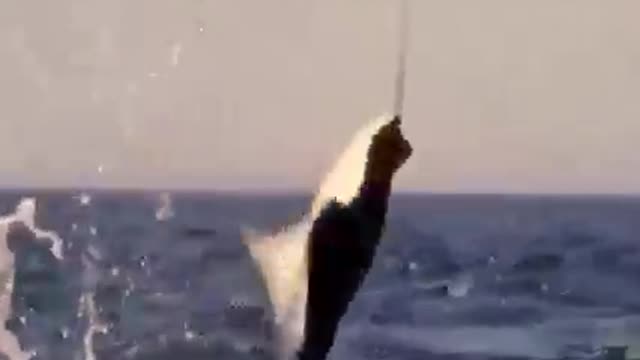Premium Only Content

like nature and amazing 😍😍😍💖
There is the mistake of confusing the blankets with the rays when it comes to two completely different species. Basically, its size differs.
A large stingray can measure 2 meters, while a blanket reaches 9 meters. In fact, its shape is also distinct. The rays have their mouths on the lower part of their body and with it touch the ground to absorb their food.
The blankets, on the other hand, have a much larger mouth and are located at the front.
The blankets have adapted to the depths of the coast. To defend themselves against attacks, they usually remain buried in the bottom. Although they are still vulnerable.
Therefore, this animal has developed defense systems that consist of a needle with poison that is located in the tail.
This needle is replaced by another one every time. A curious fact is that stingrays that have a needle are vivivarous and their offspring are born with a needle and poison. With this we can assume that it is a danger to the mother at the time of birth, but nature is wise and at birth, the consistency of this needle is very low. It will harden on contact with water.
Either way, this defensive system is only used when the stingray feels threatened. For humans, the poison is not deadly. It is usually a curious and sociable animal with different living beings.
Most rays are not poisonous, but there are five families that are. Stingray stings produce a painful puncture that increases during the first 30-60 minutes, and can last up to two days.
Some symptoms of a stingray sting are sweating, becoming pale, nausea and vomiting, diarrhea and changes in heart rate.
The stingray needs teeth to crush the crustaceans in its diet, while the blanket has no teeth or needle as it feeds mainly on plankton.
-
 0:31
0:31
Felixon
4 years agoAmazing Nature ^-^
37 -
 0:11
0:11
Tekni4
4 years agoBeautiful nature amazing
611 -
 LIVE
LIVE
Alex Zedra
33 minutes agoLIVE! Come hang out!
235 watching -
 UPCOMING
UPCOMING
I_Came_With_Fire_Podcast
10 hours agoUS Going to IRAN | Chinese Election Interference | Trump ICE Pause | BBB Back Again
3581 -
 LIVE
LIVE
Joker Effect
55 minutes agoMASSIVE STREAMER DRAMA! Did WoodBabi fakes terrorist kidnap or na? Laura exposes fakes in streaming!
652 watching -
 34:02
34:02
Friday Beers
5 hours ago $0.45 earned9 Holes, 9 Challenges, $5,000
17.3K3 -
 LIVE
LIVE
iCheapshot
20 minutes agoSplitgate 2 BR Only Dubs
37 watching -
 LIVE
LIVE
Wycca
2 hours ago🟢 PLAGUE VILLAGE: LAS PLAGAS UNVEILED 🟢 | RESIDENT EVIL 4 | Ep 5
26 watching -
 LIVE
LIVE
Geeks + Gamers
57 minutes agoMario Kart World LIVE - Nintendo Switch 2
196 watching -
 1:42:56
1:42:56
Glenn Greenwald
4 hours agoTed Cruz with Tucker: a Microcosm of DC's Rotted Wars and Foreign Policy; Will Tulsi Remain as DNI? | SYSTEM UPDATE #471
100K84